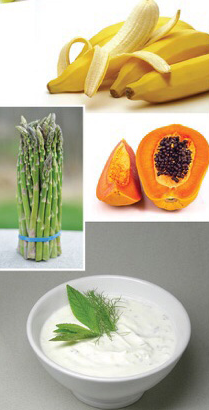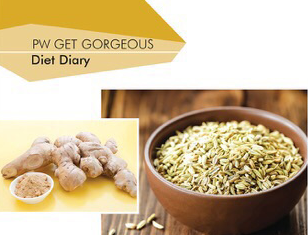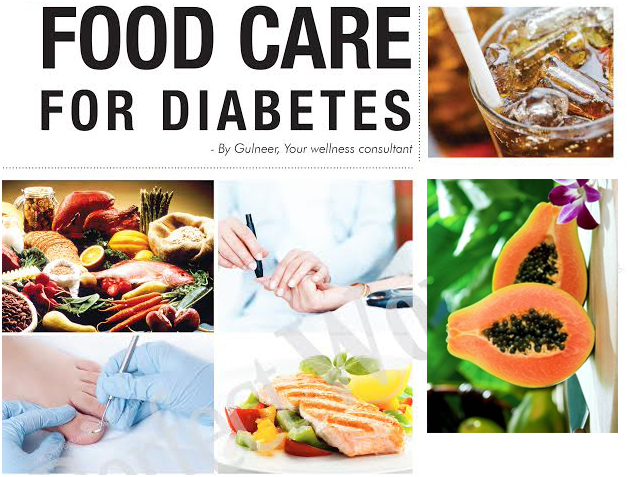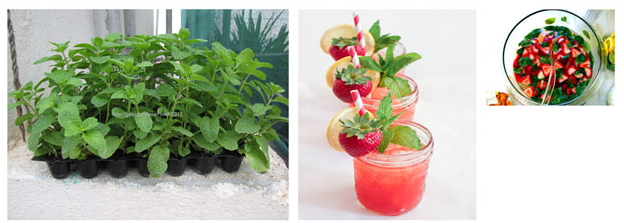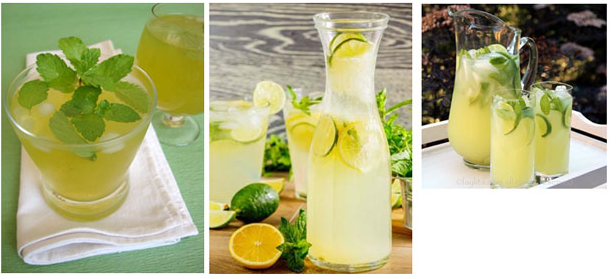Winter is a time to get into warm snuggle clothes. Though it is colder outside and we need extra calories to stay warm. Amazingly, the body engine works better in winter and food is better digested. Every one tends to feel hungry. Any vegetable that takes time to grow, and in which the edible part grows beneath the surface is warming and a good vegetable to grow in winters. Root vegetables make excellent winter choices. It is the best time to improve ones immunity.
Dates are warm in nature and are highly recommended in the winter months. I would suggest having at least 2 dates everyday during winter season. They are good source of fiber, iron, magnesium, calcium and B vitamins. Since they are sweet in nature, they are also a good source of energy. Among spices mustard, ajwain (carom seeds) are valuable remedy for winter coughs and flu, stimulating appetite and digestion and increasing blood circulation. Methi (fenugreek seeds) dry or sprouted is beneficial in bone and joint problems that surface more in winters.
All animal foods fall into the warming category, including lean dairy, meat, fish and poultry. The most warming vegetables that are good for your body are root vegetables like carrot, potato, onions, garlic, radish, yams, sweet potato, beet root and winter greens like palak (spinach), methi, sarson (mustard green), radish leaves, pudina (mint) etc.
During evening hours in winter our dinner table is full of exciting colorful fruits and vegetable salad, which are mouth watering and increases one’s appetite and also promotes with over all wellness. In this months column, I would like to share few salad recipes with their calorie count to be eaten for lunch or dinner time or even as a appetizer before dinner to curb your hunger pangs so that one does not munch too much into junk food.
CHICKPEA SALAD

It has been researched that chick-pea diet can significantly slash bad LDL cholesterol levels. Reap the benefits of this refreshing salad.
PREP TIME :15 minutes
TOTAL TIME : 25 minutes
Serving : 8
- 1 can chick peas, rinsed and drained or chickpeas soaked over night and steamed in pressure cooker
- ½ small red onion, quartered and thinly sliced.
- ½ cucumber, peeled, seeded and chopped
- 1 roasted red pepper, chopped
- 3 plum tomatoes, chopped
- 2 Tbsp chopped parsley
- 2 clove garlic, chopped
- 3 tbsp lemon juice
- 2 tsp extra-virgin olive oil
- ¼ tsp salt
Combine all ingredients in large bowl. Toss to mix. Allow it to stand at room temperature for 10 minutes for flavors to blend.
NUTRITION
(per servings) 80 Cal, 3 gms protein, 14 gms carbs, 3 gms fiber, 1.8 gms fat, 0.2 gms saturated fat, 213 mg sodium.
CHICKEN AVOCADO SALAD

This salad makes healthy meat lovers delight.
Ingredients
PREP Time : 8 mins
TOTAL TIME : 15 mins
SERVINGS : 4
- 1 lb chicken breast cutlets
- 1 Tbsp olive oil
- ¼ tsp salt
- 2 tbsp cider vinegar
- 1 tsp Dijon miustard
- 8 cups baby spinach leaves
- ½ ripe avocado, cut into ½” cubes
- 4 cherry tomatoes, halved
- PREHEAT grill pan on medium high heat for 2 minutes. Brush chicken with 1 tsp of the oil and sprinkle with half of the salt. Grill chicken 4 minutes, flip and continue cooking until centers are opaque and juices run clear, about 3 minutes longer. Cut into chunks.
- TO PREPARE THE DRESSING: Combine vinegar, mustard, 1 tbsp of water and remaining 2 tsp of oil and 1/8 tsp salt in glass jar. Shake well.
- TOSS spinach with2 tablespoon of the dressing in large bowl. Arrange chicken, avocado, tomatoes and cheese over spinach. Drizzle remaining dressing over salad and season with black pepper to taste.
Nutrition (per serving) 270 Calorie, 34 gm protein, 10 gm carbs, 5 gms fiber, 13.4 g fat
GRAPEFRUIT AVOCADO SALAD WITH SHERRY DRESSING

Ingredients
PREP Time : 20 mins
TOTAL TIME : 20 mins
SERVINGS : 4
- 1 Tbsp olive oil
- 1 Tbsp medium dry sherry or sherry vinegar
- 1 ½ tsp red wine vinegar
- ¼ tsp salt
- 1/8 tsp freshly ground pepper
- 1 pink grapefruit
- 4 cup colorful mixed baby greens
- 1 cup ripe avocaods
- 2 Tbsp chopped onions
- Mix the oil, sherry or sherry vinegar, red wine vinegar, salt and pepper in a salad bowl with a fork.
- Use a serrated knife to peel the grapefruit, cutting off most, but not all, of the white pith. Working over bowl, cut out the fruit from between the membranes. Add 1 ½ tbsp. of grapefruit juice to the dressing and mix well.
- Add the greens avocado, red onions, and grapefruit sections to the dressing and toss gently to mix. Serve immediately.
NUTRITION (PER SERVING) 154 Cal, 2 gm protein, 19 gms carbs, 6 gm fiber, 9.2 gm sat fat
SALMON SALAD

A tangy mix of balsamic vinegar, Dijon mustard and sun dried tomatoes pair nicely with salmon for this omega-3-filled delight.
PREP Time : 15 mins
TOTAL TIME : 26 mins
SERVINGS : 4
Ingredients
- 3 Tbsp chopped dry-pack sun-dried tomatoes
- 3 Tbsp balsamic vinegar
- 2 tsp extra virgin olive oil
- 1 ½ tsp dried basil
- 1 tsp Dijon mustard
- 1/8 tsp salt
- 1 roasted red pepper, cut into small strips
- 4 oz button mushrooms sliced
- 1 small onions, minced
- 4 salmon fillet (3 oz each), skin removed
- 1 tsp Italian dressing
- Place the sun dried tomatoes in a small bowl. Cover with boiling water. Allow to soak for 10 minutes or until soft. Drain and discard the liquid.
- Whisk the vinegar, oil, basil, mustard and salt in a large bowl until smooth. Place the pepper and sun dried tomatoes and greens in the bowl but do not toss. Set aside.
- Coat a medium non stick skillet lightly with non stick spray. Add the mushrooms and onion. Coat lightly with non stick spray. Cook over medium high heat for 5-7 minutes, or until soft. Remove to a plate to cool.
- Wipe the skillet with a paper towel. Coat with non stick spray. Set over high heat. Lightly coat the salmon with non stick spray. Sprinkle with the Italian seasoning. Add the salmon to the skillet. Cook for 3 minutes on each side, or until the fish flakes away easily.
- Add the mushrooms and onion to the reserved bowl. Toss to mix. Spoon the salad onto 4 plates. Top each with a salmon fillet.
NUTRITION (PER SERVING) 236 Cal, 21 gm protein, 12 gms fiber, 12.1 gm fat, 2.3 gms sat fat.
TOASTED ALMOND CHICKEN SALAD

Chives from your garden and crunchy almonds lend spice and crunch to this delicious dinner salad.
PREP Time : 20 mins
TOTAL TIME : 1 hr, 20 minutes
SERVINGS : 4
Ingredients
- 3 sm chicken breast halves
- 3 ribs celery, sliced
- 1 bunch chives, finely chopped
- ½ cup low fat plain yogurt
- ¼ cup light sour cream
- 2 tbsp silvered almonds, toasted
- salt to taste
- Ground black pepper
- 1 bag mixed greens
- Coat a nonstick skillet with cooking spray and place over medium high heat. When it is hot, add the chicken and cook for 4 minutes per side, or until the juices run clear. Remove the chicken from heat and let it rest for at least 10 minutes. When they are cool, chop the chicken breast into pieces.
- Combine the chicken, celery, yogurt, sour cream in a large bowl. Mix lightly
- Cover and refrigerate for at least 1 hour. Add the almonds and salt and pepper to taste. Serve on a bed of greens.
177 Cal, 25 gms protein, 8 gms carbs, 3 gms fiber, 5 gms fat, 1.7 gms sat fat.
For any health related query, e-mail the writer at info@wellnessbeyonddiet.com
She can also be contacted at 08427162181



